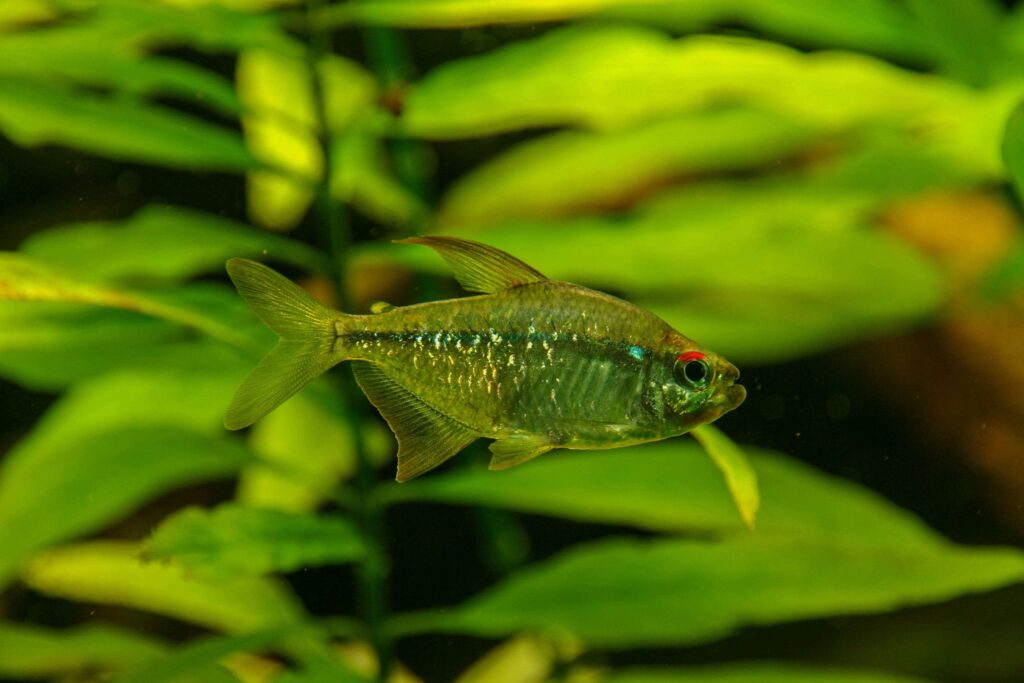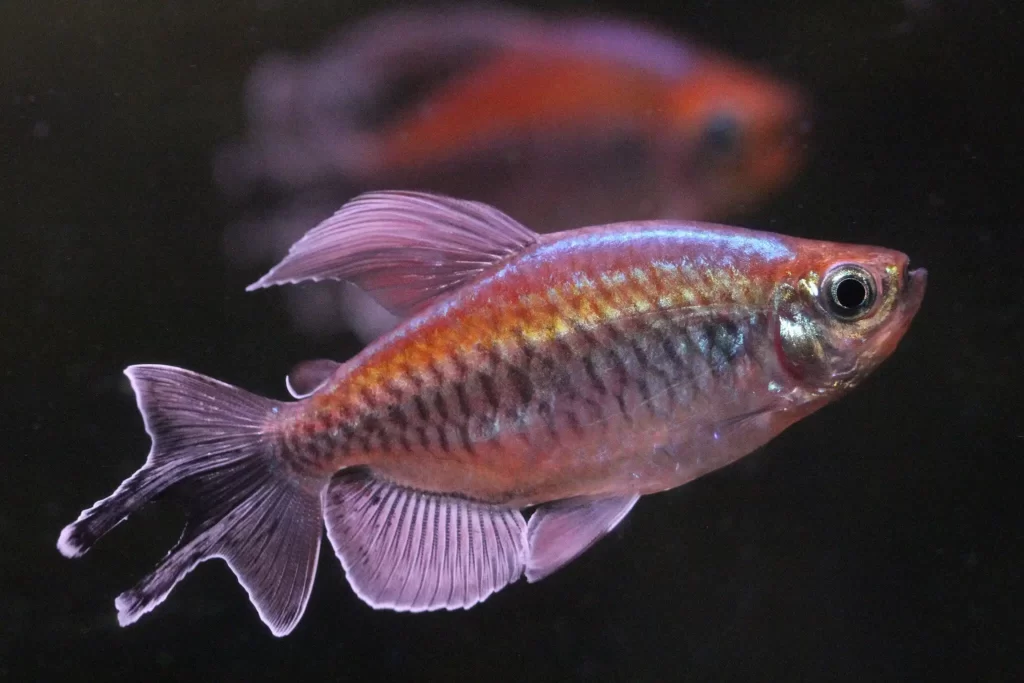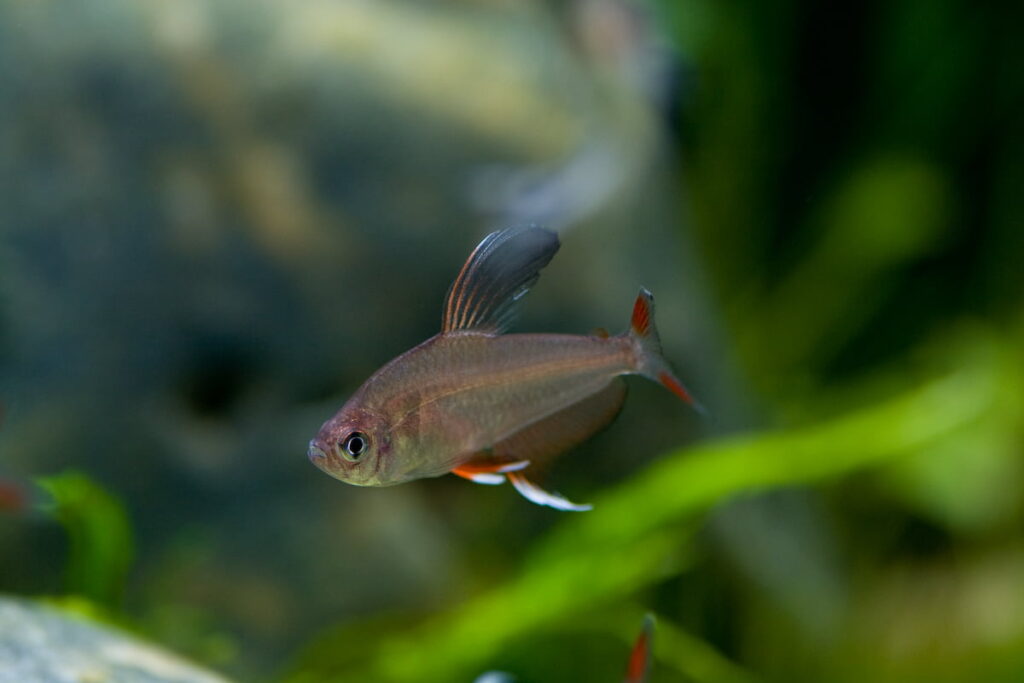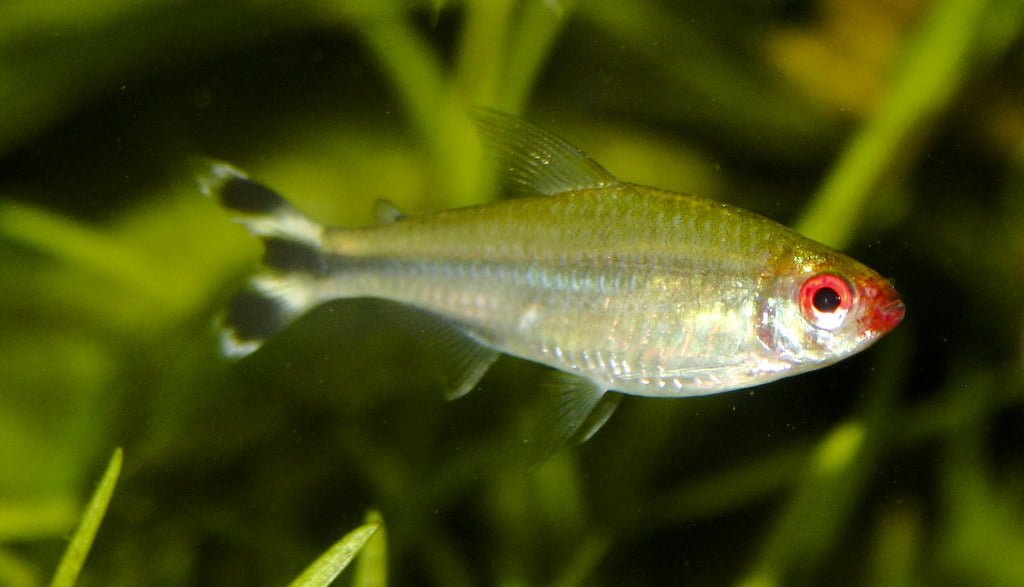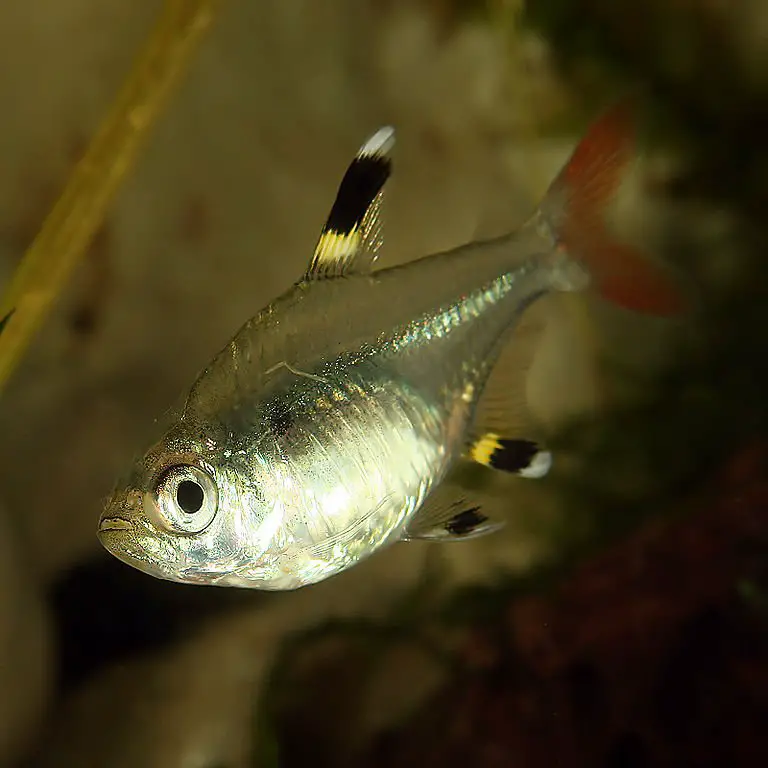Have you heard the term “Glow-up”? If not, then, I’m sure you’ve heard the story about the Ugly Duckling. You might be thinking, why am I asking this, right? These are the terms used when in early stages, the being may appear ugly but later turn into something beguiling. The same is the story with the Diamond Tetra.
Hardy in nature, Diamond Tetras, are best for beginners. Diamond Tetra is said to be the most attractive of their kind. This flat-bodied mid-dweller freshwater fish from South of America is known for its mesmerizing beauty. It shines like a diamond when reflected upon. What increases the interest in these species is their active behavior. Like any other Tetras, they don’t take up much space either and are relatively small and peaceful.
To find out more about whether you should adopt Diamond Tetra and when to do so, let’s have a detailed study.
Diamond Tetras: A Short Description
Dating back to 1920’s Diamond Tetra was first discovered in Lake Valencia. It originated from the Northern area of Venezuela, South America, where Diamond Tetra was found in abundant vegetation and leaf litter.
Once endemic to Lake Valencia, the modern world and its pollution have been said to cause endangering of this species. However, Diamond Tetra is bred commercially and produced in mass; therefore, it is widely available.
Diamond Tetras have a subtle sparkling appearance. Although at their initial stages, they don’t show such characteristics. But once they turn into adults, Diamond Tetras develop wide arched pectoral fins that add to the shimmery scales of the fish. The fins are transparent while the fish give off a hint of violet-blue, orange, and white color. Diamond Tetras are flat-bodied and have a red lid-like appearance on top of their eye. Most Diamond Tetra has a black horizontal line starting along the midpoint to the tail. Because they sparkle like diamonds, it has been named Diamond Tetra. Thus, showing off their yellowish body.
A pair of Diamond Tetra can cost you anywhere from $8 – $9. Since they need to be schooled, a group of 5 Tetras will be enough, which might cost you around $20- $25. Though the fish appears bland in the early stage, Diamond Tetra is definitely worth the price.
Diamond Tetra has a longer lifespan. On average, this dazzling beauty can live up to 6 years. A Diamond Tetra will keep you accompanied, and your eyes entertained provided good care and quality of life.
A major sexual dimorphism can be seen with the Diamond Tetra. This means that the male and female fish exhibit two different characteristics. The males have a bigger dorsal fin than the females and are more appealing to the eyes.
Did you know that?
Male Diamond Tetra, just like in Peacocks, are more colorful and attractive than their female species. They are more greenish in color. It has gray fins.
Social Behavior and Tankmates
Like most Tetras, Diamond Tetras are known for their fairly peaceful temperament, hence proving a worthy community fish among its kind. Tetras live in a school, so Diamond Tetra is recommended to be kept in schools of 5 or more of its own kind.
Diamond Tetras have skittish behavior, but they are great inhabitants for any freshwater aquarium.
Usually, Diamond Tetras are peaceful but can exhibit semi-aggressive to aggressive behavior as a reflex to threat. Diamond Tetras are known to have a reputation of ‘fin-nippers.’ But it’ll be fine as long as you school them with their own kind and is free from stress. You can catch a glimpse of rivalry among male Diamond Tetras if there are 3 or more in your tank.
Because Diamond Tetras are active as well as mid and bottom–dwellers, they do well with bottom dwellers Corydoras and most livebearers like Guppies, Barbs, Catfish, Cichlids, and Zebrafish. Growing up to an impressive size, the Diamond Tetra are easily adaptable to the environment and will not harm fish other than their kind.
Difficulty level
Rating on a scale of effort from easy to hard, Diamond Tetras are shockingly easy to keep.
Previous experiences in fish keeping will help you a lot to have Diamond Tetras in your aquariums. Don’t worry if you have thought of just beginning with Diamond Tetras, because they are quite hardy.
Diamond Tetras are locally bred, so it is most probable that the fish are adaptable to your local condition. You will, however, need to put effort into considering your tank flora, fauna, and water conditions. Besides these things, you need to take care of the following:
Caring for Diamond Tetras: Detailed facts and tips
While aquarium livestock is an important factor for any aquarist, the gadgets, artistry in aquariums, and the method behind the processes are what actually counts for your fish’s future.
Tank
The tank is the home for your fish. It is obvious that you need to consider your species, their sizes, nature, and conditions of your tank.
Diamond Tetras can grow up to 2.4 inches (6 cm) max. Though their small size, Diamond Tetras need a little more room as they are quite a spacious breed. Consider having a 20-gallon tank at minimum for the fish.
Since Tetras live in groups, a group of 5-6 Diamond Tetra will have enough room in a 25-gallon tank. If you want to add another fish, do take into consideration their nature as well as a bigger tank.
Lighting
Found in an abundance of leaf litters, Diamond Tetras are low light loving fish. They mostly like floating plants and a clumpy grassy bottom.
A darker environment is always a parameter to be maintained. A low output light like LED with less watts is the best you can opt for, which is not that expensive. You will have to keep in mind that having live plants in the aquarium means that the plants need sufficient light, so you’ll have to figure out what works for your flora and fauna.
Be it breeding or regular living, lowering the light can increase their activity by a lot.
Decoration and Substrate
Diamond Tetras like dwelling in the dark. Add a few hiding spots here and there with pieces that can create a look for your tank. A euphoria for the fish is when they are as close to their natural habitat as possible.
A darker substrate and black water habitat can definitely help enhance the overall look. You can even include dried leaves, stones, and branches to create that rustic yet real feel.
A river sand substrate is best preferred by the Diamond Tetra with live floating plants. Because there is a presence of live plants, your aquarium plants may require a dose of fertilizer from time to time.
Diet for Diamond Tetra
Like any other Tetra, Diamond Tetra are very easy to feed. Diamond Tetra are omnivores and will accept any type of fish food given to them. In the open, they feed on insects and organisms like Crustaceans, which they can swallow.
Diamond Tetras are aggressive feeders. They will overtake weak fish in the tank during feeding. Therefore, Diamond Tetras should have a balanced diet with live, frozen, and artificial food that include bloodworm, brine shrimp, and plant-based food. You can also include granules and dried flakes in their diet. A plant-based diet is recommended alternatively. This is because the fish will damage and eat the plants as well if they are hungry.
Diamond Tetras need to be fed several times a day, but in small amounts that they can consume within 3 minutes.
Fact: Diamond Tetras can be fed Spinach Leaves too.
Aquarium Water Maintenance for Diamond Tetra
No matter how much you try to keep your tank stable, your tank conditions are not always the same. A healthy tank must ensure healthy livestock and quality of life. To combat these ever-changing conditions of a tank, your basic maintenance schedule must include the following things:
Water Temperature
Diamond Tetras requires a water temperature between 75°F – 82°F (24°C – 28°C). At colder places, a heater is definitely recommended.
Water pH level
An acidic environment with a pH level of 5.5 – 7 should be maintained for this fish.
Tip: Always have a water testing kit for sensitive fish.
Water Hardness
Diamond Tetras are known to have a wide tolerance range in terms of water hardness.
These tetras can survive within a dH range of 5 – 12. Diamond Tetras require quite a soft water to survive in.
A water testing kit always comes in handy for any aquarium.
Filtration System
Filtration in any tank is done with the help of filters. This is done so that your tank doesn’t grow on algae and gather toxins, and it keeps the tank cleaner. Live plants in some amount absorb Bio-waste, nitrate, and other chemicals produced by fish. Even so, filters are a major part of fish keeping hobby.
Two types of architecture of filters in the market can be external and internal filters. Alongside this, filter media are also kept that absorb the toxins. A biological media is very much of an importance to Tetras.
A hang on back filter, a type of external filter, is the best as it does not consume space inside the tank. You can choose a filter with capacity the same to your tank or one with a higher capacity as well.
A tip is to make regular partial water changes (25%) once a week whilst vacuuming the substrate and trimming the live plants as much as possible. A water testing kit’s result will convey what you should do next in your tank.
Diseases Diamont Tetra Might Suffer From
A well-maintained tank is not susceptible to the creation of a fish disease. However, it is not always true. The new placement of items that not only include fish but plants, substrate, and even decorations can be prone to your tank to a disease. If not, a fish can develop diseases like a cloudy disease due to stress.
In general, Tetras are more prone to Ich, skin flukes, parasitic infestations, and bacterial infections. These diseases are most common in freshwater fish like Diamond Tetra itself. You can prevent this by quarantining new stock and being more cautious about things to introduce to the tank.
For detailed information on such diseases and cures, visit my article on Tetra Fish Diseases and Treatment.
Early detection of diseases is a major criteria for stopping the spreading of disease. Most fish diseases are contagious to other fish. Therefore, you must keep an eye on the fish and the condition of the fish, like signs and symptoms. Diagnosing the disease after finding out the problem should help prevent the catastrophe.
Breeding Diamond Tetras
Getting Diamond Tetras to spawn is moderately easy. These commercially bred species are readily available in the market.
The most important thing in Diamond Tetra breeding is the size. The male should be as big as the female fish; otherwise, there can be complications. However, pairing can be done with a single male with a few females.
The breeding tank should be at most 20 gallons capacity to induce spawning with a dim light setting along with spawning moss or clumps of plants for the fish to lay eggs on. Dimming the lights and feeding live food like brine shrimp in small amounts can increase the activity by a lot.
The female fish’s belly turns round as the eggs fill up.
Place a pair in a breeding tank with low light, moss, and live food to begin the process. The female will lay eggs, and the male will fertilizer the.
For a successful breeding process, tank conditions are:
- at the most 20-gallon capacity tank
- clumps of plants and moss for the fish to lay eggs
- soft and acidic water with a pH of 5.5 to 6.5 and hardness of 4°dGH
- the temperature 79 to 84° F (26 – 29° C).
- Sponge filter for filtration and aeration.
This process can take anywhere from 1-2 days. Once they breed, you need to remove the parents as they exhibit cannibalism on birth. The eggs will hatch in 3 days, and the fry will develop quickly. You can start feeding after 3 days thereafter.
Diamond Tetra Summary Chart
Let’s take a quick look at the chart and sum up Diamond Tetras as:
| Care Level | Easy |
| Scientific Name | Moenkhausia pittieri |
| Origin | Lake Valencia and its tributaries |
| Behavior | Community and peaceful fish |
| Aggressiveness | If felt threatened |
| Size | Approximately 2.4 inches (6 cm) |
| pH | 5.5-7.0 |
| Temperature | 75 – 82°F (24 – 28°C) |
| Water hardness | 5 – 12°H |
| Lifespan | 6 years |
| Diet | Easy feed, Omnivorous |
| Minimum aquarium size | 20 gallons |
| Acquaintances | Similar sized bottom-dwellers like Danios, Guppies, Rasbora, etc. |
Conclusion
I have tried to add everything related to Diamond tetra in this article for you to keep them in your fish tank healthy and happy.
Diamond Tetra can definitely mesmerize anyone with its beauty. I feel that the Diamond Tetra is worth the try. It is up to you to decide if it is worth your choice or not.
If you prefer a more colorful tank, then you can also consider Tetras like Lemon Tetras.
Do leave a comment below if you think this fish is for you.
